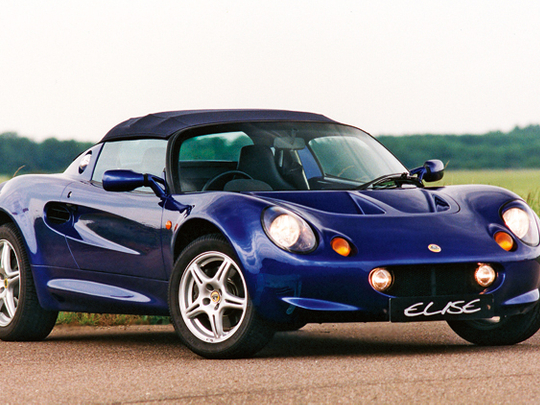
This week’s classic car is so Spartan that its interior doesn’t have carpets, electric windows or even a radio, and you have to acquire the lotus position to get into the driver’s seat because it won’t move. If you still haven’t got the pun, it’s the Lotus Elise.
Although I started off with a list of what it didn’t have, these minor flaws are forgotten as soon as you get behind the wheel.
Following the same naming convention of all Lotus models starting with the letter E, the Elise was named after the granddaughter of once Bugatti and Lotus owner Romano Artiyoli.
Plummeting sales and a financial crisis, had made this roadster the illustrious brand’s last hope. And their hope wasn’t in vain.
Sporting a grille similar to that of the Elite and side vents inspired by the GT40, the Elise was an absolute beauty.
From the beginning, Lotus has had a very simple equation for perfect handling; keep it light and simple. And true to founder Colin Chapman’s famous words on lightness, the Elise tipped the scales at an astounding 724kg.
The low weight, the poise and lightning quick responsiveness of the steering afforded such a sensational feeling, that two seat, rear-wheel drive, mid-engined roadster was hailed as one of the best handling cars on the market.
Although a 1.8-litre four-cylinder engine good for a 0-100kph dash in 5.8secs and topping out at 200kph didn’t sound impressive, it was more than enough for a car that light, making it extremely nimble on the track.
With the Elise, Lotus was able to revive its image as a manufacturer of cars providing a raw driving experience.
Although build quality is not exactly a high point, you can get one in fairly good condition for under Dh50,000 which is definitely a bargain. And being a modern classic it’s just a matter of time before the prices start to climb.











